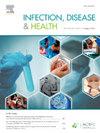Implementation of a proposed algorithm to assess and de-label false penicillin allergy labels in the community
IF 2
Q2 PUBLIC, ENVIRONMENTAL & OCCUPATIONAL HEALTH
引用次数: 0
Abstract
Background
Community pharmacists could have a pivotal role to play in de-labelling false penicillin allergies or preventing false penicillin allergy labels from occurring to reduce inappropriate prescribing of less effective and broader-spectrum antibiotics.
Methods
A quasi-experimental study aimed at implementing and evaluating an algorithm to assess and de-label false penicillin allergy labels in the community. Between April and May 2024, the algorithm was rolled out to five community pharmacies in Victoria, Australia. De-labelling outcomes of Type A reactions were recorded. Barriers and enablers to implementing the penicillin allergy assessment algorithm were also collected through semi-structured interviews.
Results
Of 18,646 patients who presented to the pharmacies, 163 individuals (0.87 %) had a penicillin allergy label. Of these 163 patients, 30 (18.4 %) patients were assessed as having a Type A reaction (a non true allergy; non-immune related). All patients with Type A reactions were engaged in an attempt to de-label their allergy; 77 % of patients were accepting whilst 23 % were hesitant or non-receptive, due to time restraints or disbelief that their allergy is not a true allergy. Qualitative interview data revealed there remains a public misconception that antibiotic allergy labels do not impact the appropriateness of antibiotic prescribing or affect patient safety through increased risk of adverse drug events and antimicrobial resistance.
Conclusions
The proposed algorithm was able to support the de-labelleling of false penicillin allergies. Future research could implement the use of the algorithm in other primary care settings and ascertain the long-term retention of the initiation of de-labelleling in the community.
在社区中评估和去除错误青霉素过敏标签的拟议算法的实施。
背景:社区药剂师可以在撤销假青霉素过敏标签或防止假青霉素过敏标签的发生,以减少无效和广谱抗生素的不当处方方面发挥关键作用。方法:一项准实验研究,旨在实施和评估一种算法来评估和消除社区中错误的青霉素过敏标签。在2024年4月至5月期间,该算法在澳大利亚维多利亚州的五家社区药店推出。记录A型反应的去标签结果。通过半结构化访谈收集了实施青霉素过敏评估算法的障碍和促进因素。结果:在18,646例就诊的患者中,163例(0.87%)有青霉素过敏标签。在这163例患者中,30例(18.4%)患者被评估为a型反应(非真正的过敏;无免疫力相关)。所有A型反应的患者都试图去标签他们的过敏;77%的患者接受,而23%的患者犹豫或不接受,由于时间限制或不相信他们的过敏不是真正的过敏。定性访谈数据显示,公众仍然存在一种误解,即抗生素过敏标签不会影响抗生素处方的适当性,也不会通过增加药物不良事件和抗菌素耐药性的风险来影响患者的安全。结论:提出的算法能够支持假青霉素过敏的去标签。未来的研究可以在其他初级保健机构中实施该算法的使用,并确定在社区中启动去标签的长期保留。
本文章由计算机程序翻译,如有差异,请以英文原文为准。
求助全文
约1分钟内获得全文
求助全文
来源期刊

Infection Disease & Health
PUBLIC, ENVIRONMENTAL & OCCUPATIONAL HEALTH-
CiteScore
5.70
自引率
5.70%
发文量
40
审稿时长
20 days
期刊介绍:
The journal aims to be a platform for the publication and dissemination of knowledge in the area of infection and disease causing infection in humans. The journal is quarterly and publishes research, reviews, concise communications, commentary and other articles concerned with infection and disease affecting the health of an individual, organisation or population. The original and important articles in the journal investigate, report or discuss infection prevention and control; clinical, social, epidemiological or public health aspects of infectious disease; policy and planning for the control of infections; zoonoses; and vaccination related to disease in human health. Infection, Disease & Health provides a platform for the publication and dissemination of original knowledge at the nexus of the areas infection, Disease and health in a One Health context. One Health recognizes that the health of people is connected to the health of animals and the environment. One Health encourages and advances the collaborative efforts of multiple disciplines-working locally, nationally, and globally-to achieve the best health for people, animals, and our environment. This approach is fundamental because 6 out of every 10 infectious diseases in humans are zoonotic, or spread from animals. We would be expected to report or discuss infection prevention and control; clinical, social, epidemiological or public health aspects of infectious disease; policy and planning for the control of infections; zoonosis; and vaccination related to disease in human health. The Journal seeks to bring together knowledge from all specialties involved in infection research and clinical practice, and present the best work in this ever-changing field. The audience of the journal includes researchers, clinicians, health workers and public policy professionals concerned with infection, disease and health.
 求助内容:
求助内容: 应助结果提醒方式:
应助结果提醒方式:


